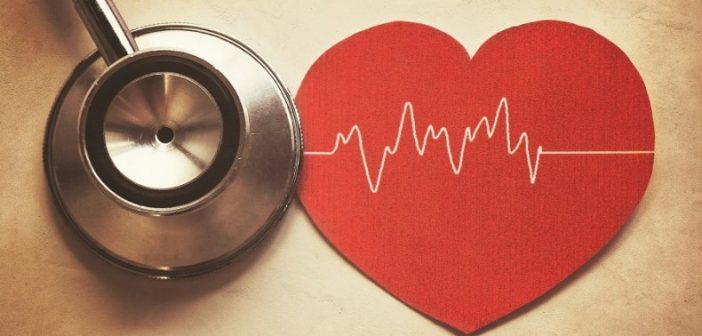Every year in the United States, there are around 4.5 million dog bites. That means that canines bite approximately 1 out of every 73 people.
Whether it happens while roughhousing with your beloved pet or as a result of a feisty, unleashed canine, it’s crucial to watch out for dog bite infection.
Dogs carry over 600 types of bacteria in their mouths. Certain bacteria can lead to infection after a dog bite.
Were you or someone close to you recently bit by a dog? Keep reading to learn 7 warning signs of an infected dog bite!
Care for the Wound Immediately
If your dog bite doesn’t warrant a trip to the emergency room, be sure to treat your bite at home immediately to prevent the risk of infection.
Flushing your wound with lots of clean water can significantly reduce any risk for infection. Wash the bite with soap and water, and try to keep the wound elevated above the heart, if possible.
Apply an antibiotic ointment and bandage, and make sure to change it regularly. Keep an eye on your wound for any signs of infection.
If the bite broke the skin, or if the wound is bleeding a lot, you shouldn’t hesitate to call a doctor. This advice is especially true if the dog was a stray.
If the dog wasn’t a stray, get as much information as you can from the owner. Get their name, number, and ask to see the dog’s vaccination records. If you aren’t able to get vaccination records, it’s best to see a doctor immediately, or after your first round of home care.
7 Warning Signs of Dog Bite Infection
Infections of dog bites can manifest quickly, which is why it’s vital to keep a close eye on your wound.
If the dog bite isn’t severe and the canine in question is up to date with their vaccinations, you can proceed with home care while looking out for these warning signs.
1. Redness, Pain, and Swelling
Redness, pain, and swelling are the most common warning signs after a dog bite that indicate infection. These warning signs apply to any animal bite or wound.
If you notice any swelling, pain, or redness after the fact, don’t hesitate to call your doctor.
2. Pus or Red Streaks
If you note any oozing pus or fluid from your dog bite wound, that’s a clear indication of infection.
Likewise, if any red streaks are moving out from the wound, it means the infection is beginning to spread.
3. Changes in Sensation or Movement
Do you have numbness or loss of sensation around your dog bite? Is there tenderness in other areas around the bite?
Both are signs of infection. If your dog bite occurs on your hand or finger and you’re experiencing a limited ability to use that hand or finger, don’t wait to call your doctor.
4. Fever, Chills, or Night Sweats
If you’ve been infected with streptococcus from a dog bite, you’ll likely experience pain and a red or swollen bite.
When the infection reaches your bloodstream, it can cause fever, chills, and low blood pressure. An infection in the blood is dangerous and should be treated by a medical professional immediately.
5. Fatigue or Muscle Weakness
If a dog bite wound appears small, with puncture marks, it can still cause a lot of damage. A deep injury can cause damage to your muscles, nerves, and blood vessels underneath your skin.
If you feel unusually fatigued or notice any weakness or absence of feeling in your nerves and muscles, seek medical help.
6. Difficulty Breathing
If you have difficulty breathing after being bitten by a canine, it could indicate a systemic or localized infection.
If your body becomes fatigued and you find you have trouble breathing, your body is likely working overtime to try and fight off rapidly growing bacteria.
See a doctor immediately if you experience difficulty breathing after a dog bite.
7. Rabies Signs
The first symptoms of rabies can occur anytime between a few days to more than a year after a dog bite!
Typically, they begin with a prickling, tingling, or itching feeling around the area of a bite. Afterward, a person might experience flu-like symptoms, such as a headache, fever, loss of appetite, muscle aches, tiredness, and nausea.
Rabies has the highest mortality rate of any disease across the world, at 99.9%. If you’ve been bitten by a dog and you’re unsure if they’ve had a rabies shot, go to the doctor immediately. Rabies deaths are entirely preventable when treated right away.
What to Do After a Dog Bite
If you’ve been bitten by a dog and the owner is around, make sure to get their information and the canine’s vaccination records.
If there are any questions as to whether or not they’re up to date with their shots, don’t hesitate to seek medical attention.
If you’re worried about seeing a doctor for financial reasons, call a lawyer to see how they can help.
You shouldn’t be held responsible for someone else’s negligence. Plus, the emotional and physical trauma and medical visits and bills could warrant significant compensation for your pain and suffering.
You can learn more about potential compensation and how a lawyer can help here.
Don’t Ignore Dog Bite Infection Signs
If you or a loved one was bitten by a dog, be sure to look out for any dog bite infection signs.
For smaller wounds, you can practice self-care at home, as long as the dog was up to date on all their vaccinations, and you don’t notice any infection signs.
However, it’s always best to see a doctor regardless as they’ll be able to guide you through home care treatment and prescribe any antibiotics if necessary. If there’s any chance that the dog in question has rabies, then you’ll have to go through a serious of rabies shots to ensure you stay healthy and rabies-free.
If you enjoyed this article, check our health section daily for more advice and tips on staying safe and healthy!





This resonated deeply with me due to my recent unfortunate experience with a dog. I love dogs, got 13 of them never been bitten before. However last month a stray dog decided to have a quick nip at my ankle 🙁 cost a fortune to get the 5 injections, spent a lot of time travelling to the doc. Not a good thing to happen during COVID–19